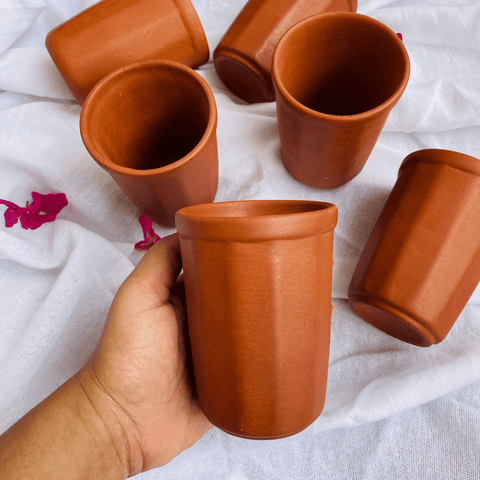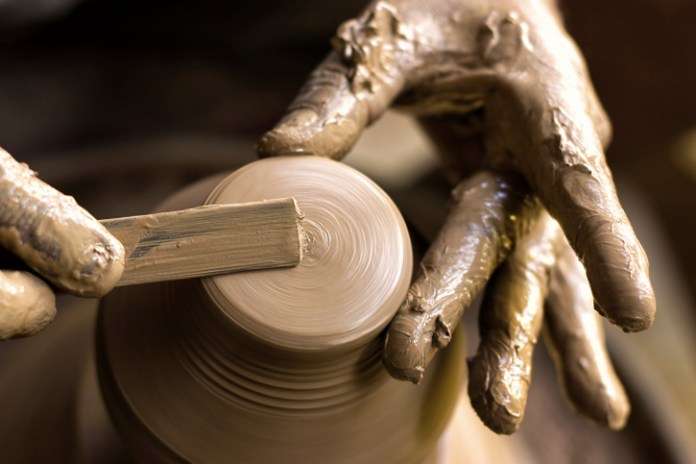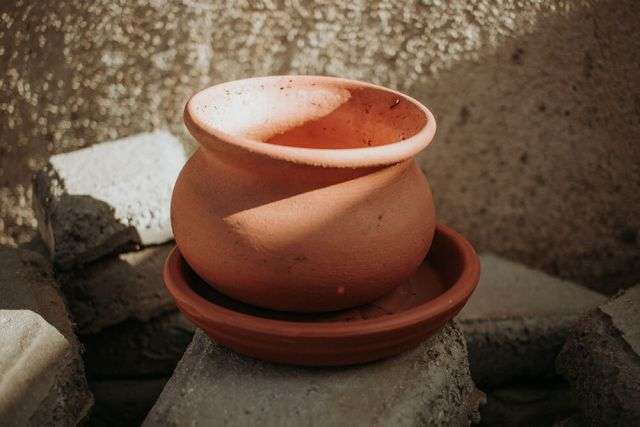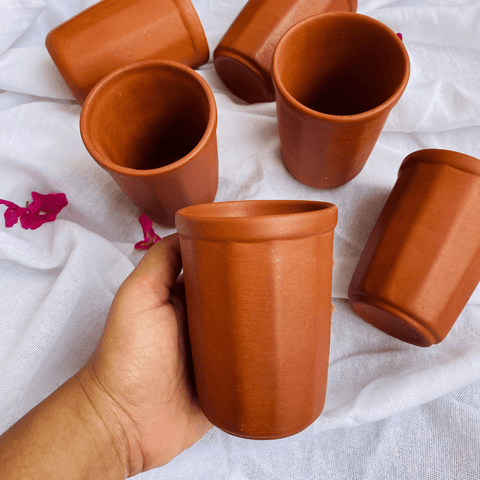Hello there! In this article, we’re going to explore the benefits of using clay for preservation. We’ll take a closer look at how clay can be used for off-grid living and discuss its effectiveness in preserving various items. By the end of this article, you’ll have a better understanding of why clay is a fantastic option for preserving things. So, let’s dive right in and discover why clay is good for preservation!
Benefits of Using Clay for Preservation

Introduction to Clay Preservation
In the pursuit of sustainable and eco-friendly preservation methods, clay has emerged as a highly effective material. Discerning architects, historians, and preservationists have realized the invaluable benefits of utilizing clay in various restoration and conservation projects. With its long-standing historical significance and proven advantages, clay has become a recognized and sought-after medium for the preservation of cultural heritage. In this article, we will explore the numerous benefits of using clay for preservation, its applications, techniques, challenges, and its future role in sustainable development.
Understanding the Role of Clay in Preservation
Clay, a naturally occurring material, has been used for centuries in various forms of construction and art. Its unique properties make it an ideal choice for preservation tasks. Clay has a remarkable ability to regulate moisture, providing a stable environment that helps protect the integrity of structures and artifacts. Its natural composition also acts as a deterrent against pests and decay, thus increasing the longevity of preserved entities. The historical significance of clay in preservation further emphasizes its value as a reliable medium for maintaining cultural heritage.

Historical Significance of Clay in Preservation
Throughout history, civilizations have relied on clay for their construction and preservation needs. From the ancient Egyptians to the Romans, clay was used to build enduring structures that have stood the test of time. The Great Mosque of Djenne in Mali, the Palace of Knossos in Crete, and the historic city of Shibam in Yemen are just a few examples of clay structures that have remained intact for centuries. The preservation and restoration of these sites are a testament to the effectiveness and durability of clay in maintaining cultural heritage.
Advantages of Clay Preservation
Natural and Sustainable Material
One of the primary benefits of using clay for preservation is its natural and sustainable nature. Unlike synthetic materials, clay is readily available and does not harm the environment during its extraction or production. It is a renewable resource that can be sourced locally, reducing the energy consumption associated with transportation. Clay’s sustainable qualities make it an appealing choice for those seeking eco-friendly preservation solutions.
Excellent Moisture Regulation
Clay’s exceptional moisture regulation properties make it an ideal substance for preservation. It has the ability to absorb and release moisture, creating a balanced and stable environment that minimizes the risk of damage to structures and artifacts. This moisture regulation prevents the detrimental effects of water seepage, such as erosion, decay, and mold growth. Clay’s innate ability to manage moisture is crucial in maintaining the integrity of preserved entities.
Superior Insulation Properties
Another advantage of using clay for preservation is its superior insulation properties. Clay structures have the ability to retain heat during colder seasons, providing thermal comfort to occupants. Conversely, during hotter seasons, clay acts as a natural insulator, keeping the interior cooler. This natural temperature regulation reduces the reliance on mechanical heating and cooling systems, resulting in energy efficiency and cost savings.
Protection Against Pests and Decay
Clay possesses inherent properties that protect against pests and decay. Its composition and texture act as a deterrent to insects, rodents, and other pests that can cause damage to preserved structures and artifacts. Clay’s alkaline nature also inhibits the growth of fungi and bacteria, minimizing the risk of decay and deterioration. This natural protection ensures the long-term preservation of historical sites and artifacts.
Preservation of Historical Artifacts
The use of clay in preservation extends beyond architectural structures. Clay is also utilized for the restoration and conservation of historical artifacts, including sculptures, pottery, and artworks. Its malleability and compatibility with various art forms make it an ideal medium for repairing and rejuvenating these priceless objects. Clay’s ability to seamlessly integrate with historical artifacts ensures the preservation of their original aesthetic and artistic value.

Applications of Clay Preservation
Construction of Clay Houses
One of the most practical applications of clay preservation is in the construction of clay houses. Clay houses, also known as adobe houses, have been prevalent in many regions of the world for centuries. The use of clay in house construction provides numerous benefits, including excellent thermal insulation, breathability, and natural humidity regulation. Clay houses offer a sustainable and energy-efficient alternative to conventional housing methods.
Clay as a Natural Building Material
Clay is not limited to house construction; it can also be used as a natural building material for various structures. From schools and community centers to commercial buildings, clay offers a versatile and eco-friendly alternative to traditional construction materials. Its natural composition, non-toxic nature, and low carbon footprint make it an appealing choice for environmentally conscious architectural projects.
Restoration of Monuments and Ancient Sites
Clay preservation techniques have played a pivotal role in the restoration of monuments and ancient sites. Historical structures such as temples, castles, and palaces are often subjected to wear and tear over time. Clay-based restoration techniques, such as cob building and earthbag construction, help recreate and revitalize these structures, preserving their historical significance for future generations.
Clay for Archaeological Preservation
Clay is also extensively used in archaeological preservation. Excavated artifacts require careful handling and treatment to ensure their longevity. Clay-based methods, such as consolidation and stabilization, help protect and preserve these delicate objects. The use of clay in archaeological preservation helps maintain the authenticity and integrity of historical artifacts.
Preserving Art and Sculptures
Clay’s versatility extends to the preservation of art and sculptures. Artworks made from clay, including pottery, statues, and reliefs, often require repair and restoration due to the ravages of time. Clay’s compatibility with these art forms allows for seamless repairs, maintaining the original artistic vision and historical value of the pieces. Clay’s natural properties also help protect these delicate artworks from environmental factors such as moisture and pests.
Clay Preservation Techniques
Adobe Construction for Sustainable Housing
Adobe construction is an age-old technique that utilizes clay as a primary building material. The process involves mixing clay, sand, and straw to form bricks or blocks, which are then dried in the sun. These bricks are then used to construct walls and structures. Adobe houses offer exceptional thermal performance, as their thick walls provide insulation against temperature fluctuations. Additionally, adobe construction has a low environmental impact, consuming minimal energy during both construction and maintenance.
Cob Building for Natural Structures
Cob building is another traditional clay preservation technique that uses a mixture of clay, sand, and straw to create walls. Unlike adobe, cob structures are built directly on-site by hand, allowing for greater flexibility in design. Cob walls offer excellent thermal mass, absorbing heat during the day and releasing it at night, ensuring a comfortable and energy-efficient living environment. The sculptural nature of cob construction also allows for unique and artistic architectural expressions.
Earthbag Construction for Resilient Shelter
Earthbag construction is a modern adaptation of traditional clay preservation methods. It involves filling bags with moistened clay soil and then stacking them to form walls. The bags are reinforced with barbed wire or other materials for added stability. Earthbag construction offers exceptional durability and resilience, making it suitable for a variety of climates and terrains. Its simplicity and affordability make it an attractive option for those seeking sustainable and resilient shelter solutions.
Repairing and Rejuvenating Clay Structures
Over time, clay structures may require repairs and rejuvenation to maintain their integrity. Clay preservation techniques involve the careful analysis and treatment of deteriorated clay elements. Depending on the extent of deterioration, methods such as reapplication of clay plaster, repointing, or reinforcement with natural or synthetic materials may be employed. These techniques ensure the structural stability and aesthetic appeal of clay structures for generations to come.
Consolidation and Stabilization Methods
Clay preservation also involves the consolidation and stabilization of delicate clay artifacts and structures. Consolidation techniques aim to reinforce weakened or deteriorated clay, preventing further damage or loss. Consolidants, such as lime or clay-based solutions, are applied to strengthen the clay matrix. Stabilization methods utilize techniques such as injections or embedding of supportive materials to secure fragile clay objects. These preservation techniques ensure the longevity and stability of clay-based cultural artifacts.

Benefits of Clay in Preservation
Long-Term Durability and Stability
One of the most significant benefits of using clay for preservation is its long-term durability and stability. Clay structures have stood the test of time, with many ancient examples still intact today. The inherent strength and resilience of clay provide a solid foundation for preservation efforts, ensuring the continued existence of historical sites and artifacts.
Environmentally Friendly Preservation
Preservation methods utilizing clay are inherently eco-friendly. Clay is a natural and sustainable material, offering a renewable resource that does not harm the environment. Utilizing clay for preservation reduces the reliance on synthetic and non-renewable materials, minimizing the carbon footprint associated with traditional conservation methods. By adopting clay preservation techniques, we can contribute to a more sustainable and environmentally conscious approach to heritage conservation.
Unique Aesthetic Appeal
Clay preservation techniques also offer a unique aesthetic appeal. The earthy tones and textures of clay structures and artifacts add a sense of authenticity and connection to the natural environment. Clay’s versatility allows for various artistic expressions and design possibilities, enabling the preservation of cultural heritage in visually captivating and culturally significant ways.
Thermal Comfort and Energy Efficiency
Clay structures provide excellent thermal comfort and energy efficiency. Their natural insulation properties regulate indoor temperatures, reducing the need for artificial heating and cooling systems. This not only leads to energy savings but also creates a comfortable living environment. By preserving historical clay structures and utilizing their energy-efficient qualities, we can contribute to a sustainable future with reduced energy consumption.
Reduced Reliance on Synthetic Materials
The use of clay for preservation reduces our reliance on synthetic materials. Clay is a natural alternative that does not require extensive processing or manufacturing. By incorporating clay preservation techniques, we can minimize the consumption of synthetic materials, which often have a high environmental impact. This reduction in synthetic material usage aligns with sustainable development goals and promotes a more environmentally friendly approach to preservation.
Challenges of Clay Preservation
Structural Vulnerabilities
Despite its inherent strength, clay structures may possess certain vulnerabilities. Over time, clay can erode, causing structural instability. Proper maintenance and routine inspections are necessary to identify and address these vulnerabilities. By staying vigilant and implementing necessary preservation techniques, we can mitigate the risk of structural failure.
Moisture-Related Issues
While clay’s moisture regulation properties are advantageous, improper moisture management can lead to issues such as water seepage, dampness, and mold growth. Clay structures require proper waterproofing and adequate drainage systems to prevent these moisture-related problems. Implementing effective moisture management strategies is crucial in ensuring the longevity and integrity of clay preservation projects.
Maintenance and Upkeep
Clay preservation projects require regular maintenance and upkeep to retain their integrity. This involves monitoring for signs of deterioration, addressing necessary repairs, and implementing preventive measures. The maintenance requirements for clay structures may be more demanding compared to conventional materials, but the rewards of preserving cultural heritage outweigh the associated challenges.
Expertise and Skill Requirements
Properly executing clay preservation techniques requires a certain level of expertise and specialized skills. Preservation professionals, restoration architects, and craftsmen need to possess a deep understanding of clay’s properties, preservation methodologies, and restoration techniques. Investing in knowledge, training, and collaboration is crucial to ensure successful and effective clay preservation projects.
Adapting to Modern Building Codes
Clay preservation often involves adapting historic structures to comply with modern building codes and safety regulations. This process requires a delicate balance between preserving historical authenticity and ensuring structural integrity. Preservation architects and professionals need to navigate the complexities of building codes while maintaining the cultural and historical significance of the structures they are preserving.

Clay Preservation Projects
Restoration of Ancient Temples
Clay preservation has played a significant role in the restoration of ancient temples across the globe. From the Temple of Karnak in Egypt to the Angkor Wat in Cambodia, clay-based restoration techniques have revived these architectural marvels, preserving their cultural, historical, and spiritual significance.
Revitalization of Traditional Communities
Clay preservation techniques have also contributed to the revitalization of traditional communities. By preserving and restoring clay houses and structures, these communities are able to maintain their cultural heritage, while also attracting tourism and boosting the local economy.
Preservation in Modern Architecture
Clay preservation is not limited to historical structures; it is also gaining recognition in modern architecture. Architects and designers are increasingly incorporating clay into contemporary projects, harnessing its sustainable qualities, unique aesthetic appeal, and natural thermal comfort to create environmentally friendly and visually captivating spaces.
Clay Preservation in Museums
Museums play a vital role in preserving and exhibiting historical artifacts. Clay plays a significant part in museum conservation efforts, as it is utilized for the restoration and preservation of clay-based artworks and sculptures. Museums also incorporate clay structures and exhibits to educate visitors about the historical significance and versatility of this remarkable material.
Community-Led Preservation Initiatives
In recent years, community-led preservation initiatives have gained momentum worldwide. These projects focus on empowering local communities to preserve their architectural heritage using clay preservation techniques. Such initiatives not only contribute to the sustainable conservation of cultural heritage but also foster a sense of community pride and ownership.
The Future of Clay Preservation
Innovation in Clay Conservation Techniques
The future of clay preservation lies in continued innovation and refinement of conservation techniques. Researchers and experts are constantly exploring new methods and materials to enhance the durability, stability, and resilience of clay structures. The integration of modern technologies and scientific advancements will further elevate the efficiency and effectiveness of clay preservation.
Collaborative Research and Development
Collaboration between preservation professionals, researchers, and conservation organizations is essential for the advancement of clay preservation. By sharing knowledge, expertise, and resources, the preservation community can collectively address the challenges and explore new possibilities in the field. Collaborative research and development efforts will push the boundaries of clay preservation, ensuring its continuous evolution.
Clay Preservation in Sustainable Development
As sustainable development becomes increasingly crucial, clay preservation will play a vital role in achieving environmental and cultural sustainability. Clay structures offer energy-efficient solutions, reducing the carbon footprint associated with conventional construction methods. By embracing clay preservation techniques, we can create a more sustainable built environment that respects cultural heritage and minimizes environmental impact.
Promoting Awareness and Education
Promoting awareness and education about the benefits of clay preservation is crucial for its future. By educating the public, professionals, and policymakers about the value and significance of clay in preserving cultural heritage, we can garner support and ensure the preservation of these invaluable structures and artifacts.
Preserving Cultural Heritage
Ultimately, the future of clay preservation lies in its ability to preserve cultural heritage for future generations. By embracing the benefits of clay and implementing preservation techniques, we ensure that our rich history, traditions, and artistic achievements continue to inspire, educate, and captivate the world.
Conclusion
Embracing the benefits of using clay for preservation is not just a matter of preserving the past; it is about investing in our collective future. Clay’s natural and sustainable qualities, combined with its ability to regulate moisture, provide excellent insulation, protect against pests and decay, and preserve historical artifacts, make it an ideal material for conservation efforts. By harnessing the advantages of clay preservation, we can create a timeless and sustainable future where cultural heritage thrives, environmental impact is minimized, and the beauty of the past is preserved for generations to come.




